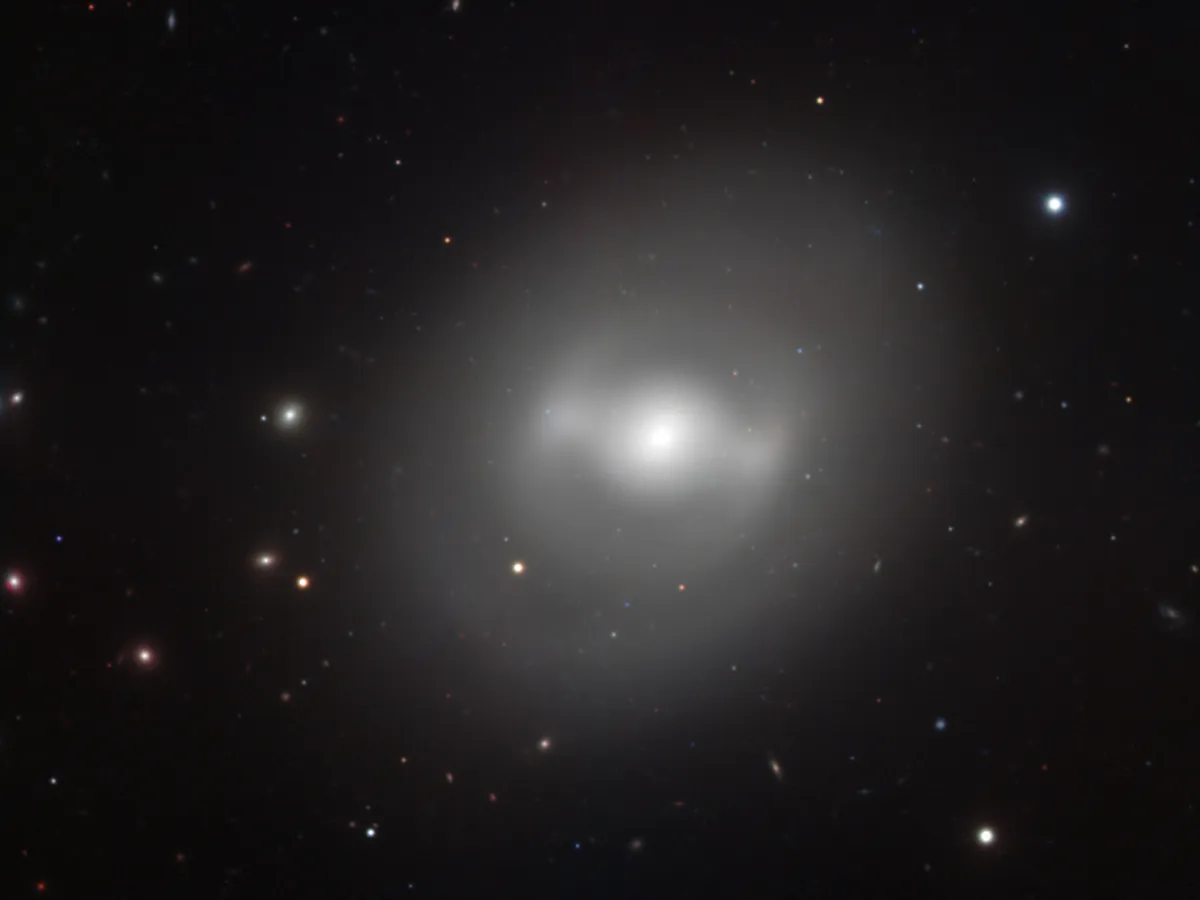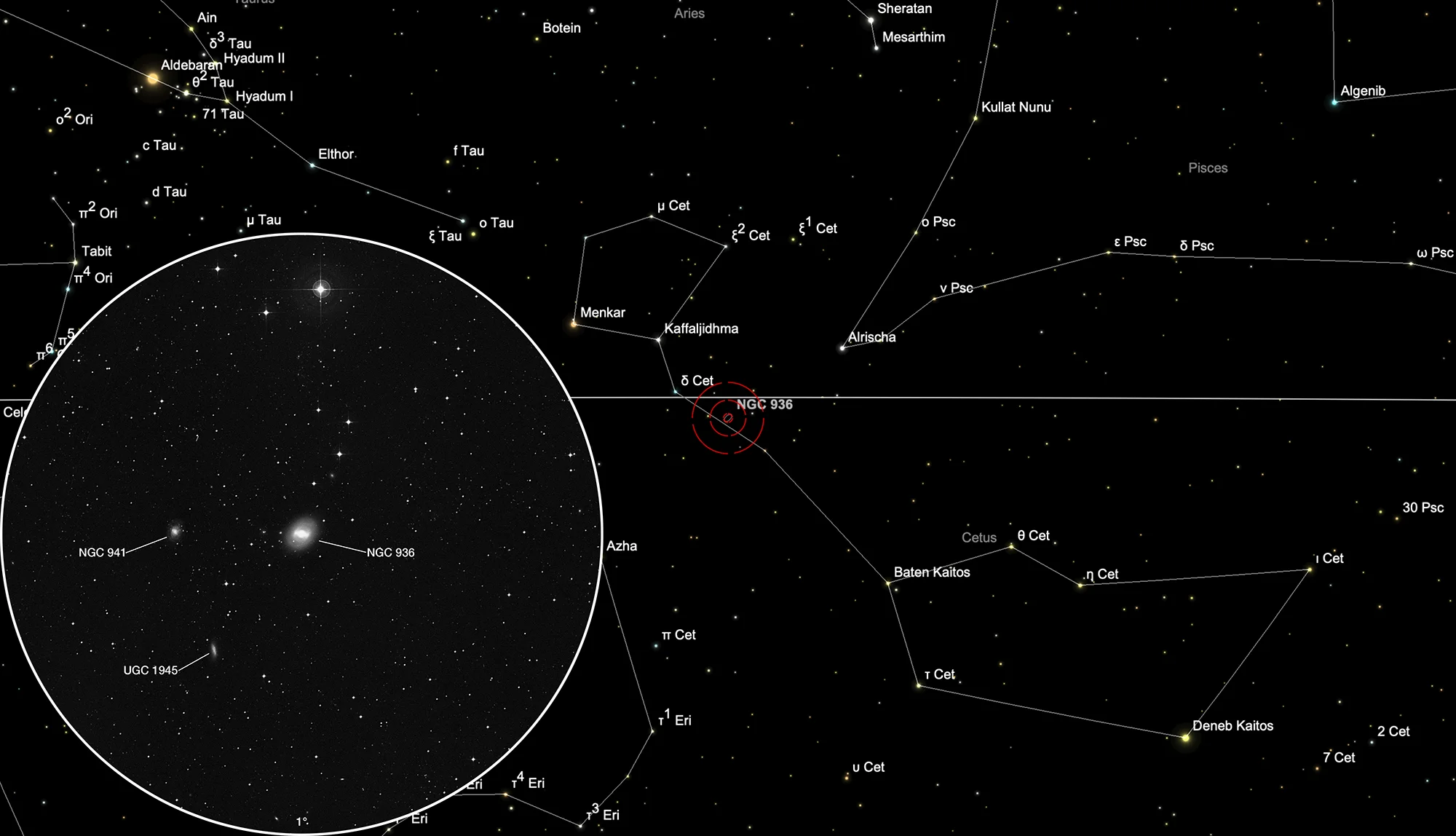Darth Vader's Galaxy (NGC 936)

History
This galaxy was discovered by William Herschel on 6 January 1785 using his 18.7 inch reflector. He cataloged it as IV 23 (Class IV = planetary nebulae, stars with burs, with milky chevelure, with short rays, remarkable shapes, etc.) and noted: «Considerably bright, a very bright nucleus with a chevelure of 3 or 4' diameter.» [463] His son John later observed the galaxy on 24 November 1821, cataloged it as h 223 and described it as «very bright, very large, round, pretty suddenly brighter in the middle, 2' diameter, fades away insensibly.» [466] Dreyer added the galaxy as NGC 936 to his New General Catalogue published in 1888. [313]
In the same night when William Herschel found NGC 936 he also cataloged a very faint nebula to the east as III 261 and noted: «very faint, considerably large.» [463] That discovery ended up as NGC 941. [313]
Due to the galaxy NGC 936 unusual shape resembling Darth Vader's TIE fighter in the 1977 Star Wars movie, it got nicknamed «Darth Vader's Galaxy». [641]
Physical Properties
NGC 936 harbours exclusively old stars and shows no sign of any recent star formation. It is debatable whether this galaxy is dominated, like most others, by a large amount of dark matter. [641] The redshift is z ≈ 0.004096. Given distances for NGC 936 range from 18 Mpc through 28 Mpc. The small galaxy NGC 941 has a redshift of z ≈ 0.005397 and lies around 16 Mpc to 21 Mpc away. [145]
| Name | RA | Dec | Type | bMag | vMag | B-V | SB | Dim | PA | z | D(z) | MD | Dreyer Description | Identification, Remarks |
|---|---|---|---|---|---|---|---|---|---|---|---|---|---|---|
| NGC 936 | 02 27 37.5 | -01 09 23 | Gx (SB0-a) | 11.1 | 10.2 | 0.9 | 13.2 | 4.7 × 4.1 | 135 | 0.004770 | 20.15 | 20.680 | vB, vL, R, mbMN, p of 2 | WH IV 23; h 223; GC 544; UGC 1929; MCG 0-7-17; CGCG 388-18 |
| NGC 941 | 02 28 27.8 | -01 09 04 | Gx (SBc) | 12.9 | 12.4 | 0.5 | 14.1 | 2.7 × 1.8 | 170 | 0.005364 | 22.66 | 21.200 | vF, cL, R, f of 2 | WH III 261; h 224; GC 546; UGC 1954; MCG 0-7-22; CGCG 388-23; KUG 0225-013; IRAS 02259-0122 |
Finder Chart
The galaxy NGC 908 is located in the constellation Cetus. On 2 November it is in opposition to the Sun and crosses the meridian at local midnight. The best observation time is June to April.
Visual Observation
762 mm Aperture: The bright core of the galaxy NGC 936 is slightly elongated. This small but bright central region is surrounded by a much fainter, more circular outer region. — 30" SlipStream-Dobson f/3.3, Hasliberg, 26. 12. 2024, SQM-L 21.17, Elena + Eduard von Bergen
